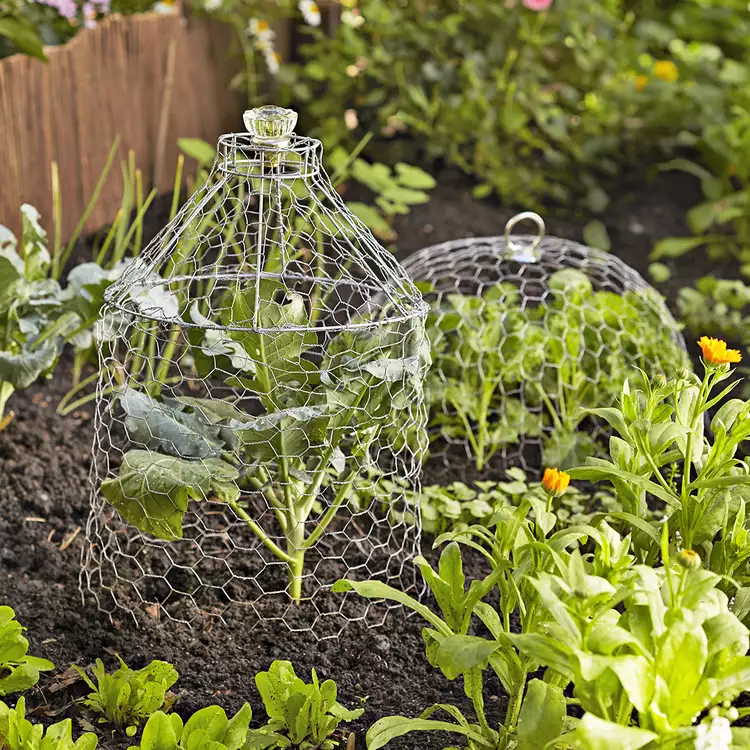- Total Time: 1 hour, 30 minutes
- Skill Level: Beginner
- Estimated Cost: $20 to $25
- Yield: One cloche
Traditionally, chicken wire is used to keep poultry safe from predators and fence in gardens, protecting plants from hungry rabbits and other critters. No wonder the inexpensive hexagonal mesh proves essential for a gardener’s toolshed. Chicken wire is lightweight yet durable and flexible enough for shaping. The netting forms a practical see-through wire cloche that makes an interesting accent in the garden.
What You'll Need
Equipment / Tools
- Tape measure
- Gloves
- Tin snips
- Needle-nose pliers
- Adjustable pliers
Materials
- 1 12-inch nursery pot
- Chicken wire
- Wire lampshade frame
- Glass doorknob
- Garden staples
Instructions
-
Measure and Cut Chicken Wire
Measure the circumference of the nursery pot that will be used to help form the base of the cloche (a 12-inch-diameter pot has a circumference of approximately 38 inches); wearing gloves and using tin snips, cut a comparable length of chicken wire. Cut chicken wire to the desired height—as tall as or taller than the pot. Cut a semicircular piece of chicken wire to fit around the lampshade frame.
-
Shape Chicken Wire Around Frame
Wrap the semicircular chicken wire around the lampshade frame, bending and squeezing the wire to fit snugly on the frame to form the top of the wire cloche. Cut away excess wire and use needle-nose pliers to wrap cut ends around the chicken wire.
-
Create Chicken Wire Cloche Cylinder
Wrap the length of chicken wire loosely around the pot, forming a cylinder for the cloche bottom. Use needle-nose pliers to wrap any cut ends of the wire around the adjoining chicken wire. Slide the mesh cylinder off the pot.
-
Connect Top and Bottom of Cloche
Attach the wire cloche bottom (mesh cylinder) to the cloche top. Use adjustable pliers to twist the top edge of the cylinder around the bottom edge of the lampshade frame, wrapping any cut ends and pinching the edges to secure.
-
Attach Door Knob
Wiggle and wedge a glass doorknob or other decorative accent into an opening at the wire cloche top. Use needle-nose pliers to pinch the wire together to hold the knob in place. Snug the bottom edge of the cloche into the garden soil. Use two or three garden staples to hold the cloche firmly in place. This step is crucial to prevent critters from crawling under the cloche.




















